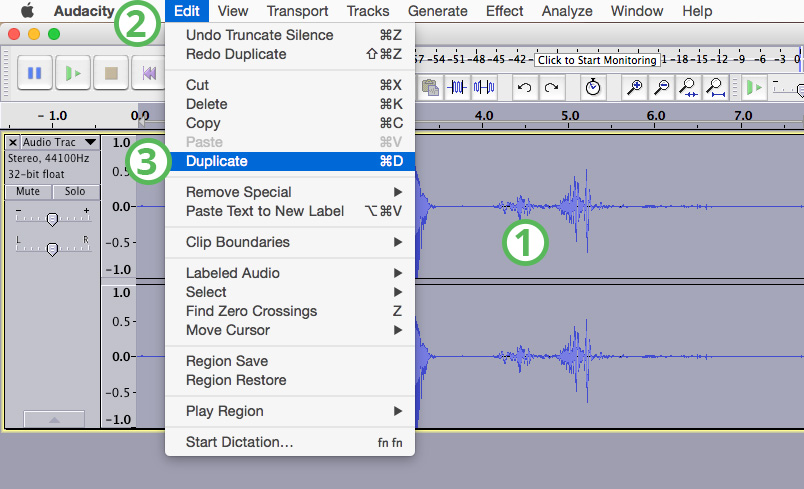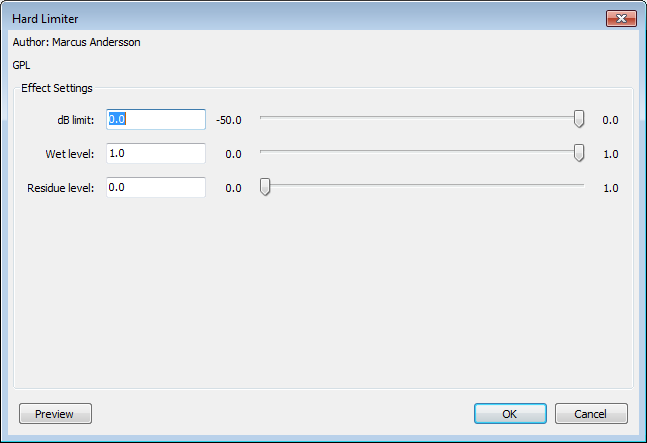
Echoes are particularly challenging as they are very similar to the original signal. Noise Reduction is better suited for removing steady and consistent noises like air conditioners. But with Audacity, you can set your mic gain low enough to avoid many room echoes without compromising recording quality.ģ. You may need to tinker with the settings and undo then reapply the effect multiple times before you get the exact sound you are looking for. Note that the volume slider on your playback feature will make your voice sound louder through your headphones but will not increase the recording volume.

Then, when you play it back, your once-quiet voice should be louder. When you click “OK,” you should see your waveform becoming taller. Make sure “ Allow Clipping” is not checked, as clipping leads to distortion.In the “ New Peak Amplitude” window, set your desired setting with 0.0 max.But Audacity’s Amplify function can help. You may be disappointed with the results at first, as your voice seems too quiet. Using Audacity, you can turn down the gain until your microphone is no longer recording background echoes. Raising the gain means your mic picks up sounds it would miss on a lower gain setting.

Your mic’s gain knob can be used to increase or decrease the microphone’s sensitivity. Moving closer to the microphone will also help you use Audacity to correct one of the most common echo sources and other unwanted background noises.įor more information, check out how to make your voice sound better on Audacity. You may also find that placing a thick quilt around the back of your microphone and recording in a room full of padded furniture goes a long way toward helping your echo issues. The lower the gain, the less chance there is of picking up unwanted sounds.Ī pop filter like the Earamble Microphone Pop Filter (available on ) will keep your p’s from popping and your s’s from hissing when you lean into your mic. At that distance, you can keep the gain at a reasonable level with both your mic and Audacity settings. The echoes are magnified by the reverberant surface, making your words seem unclear and giving them a booming quality.įor the best recordings, you should speak with the microphone 6-10 inches away.


This can become a huge problem if your microphone is closer to a wall or window than it is to your mouth. But if you talk too far away from the microphone, your recording will pick up more background noise, including echoes. If you’re too close to the microphone when you speak, your recording will emphasize consonants like “p” and “t” and make “s” sounds uncomfortably sibilant.


 0 kommentar(er)
0 kommentar(er)
